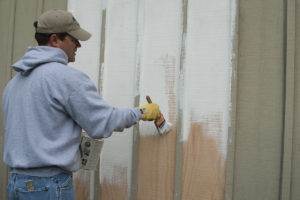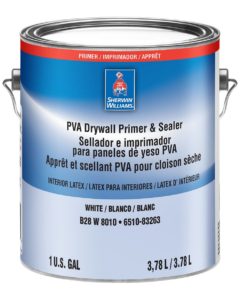Why use primer?
Primer is formulated to adhere to the surface below while providing the best possible surface for the finish coat. Primers fill and bind with underlying surfaces, which keeps the finish coat from peeling or from soaking unevenly into the surface.
Priming Bare Wood
When top coat paint is applied directly to bare wood, the wood can absorb components of the paint preventing it from forming the proper bonds, which weakens the paint so it can easily crack or peel. Bare wood also has color variations in the grain which primer helps cover. Additionally, some types of wood also has natural tannins and may require alkyd/oil primer to trap the tannins and keep them from bleeding through to the surface.

New Drywall
Application specific primer is also important on new drywall (first time to be painted). Drywall paper surface and joint compounds are very porous and can unevenly soak in components of the finish-grade paint making it weaker, causing uneven color and uneven sheen. A quality drywall first coat such as Sherwin-Williams PVA Drywall Primer & Sealer can help make your newly drywalled project a big success.

Drastic Color Changes
Primers can be a big help when you are changing paint colors from dark to light or light to dark by creating an even, neutral base coat that allows your new color to actually be the one you chose. Without a primer coat the color of your old paint could affect the final tint.

Prime Time to Call the Doctor
One of the great benefits of working with Paint Doctor’s Painting is the expertise we bring when it comes to using the right primer for your project. Your unique project requires a specific prescription and we highly recommend you follow the Doctor’s instructions. Call Mike at 541-497-3804.

